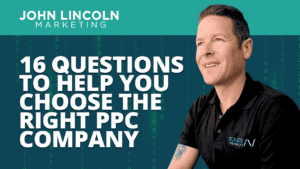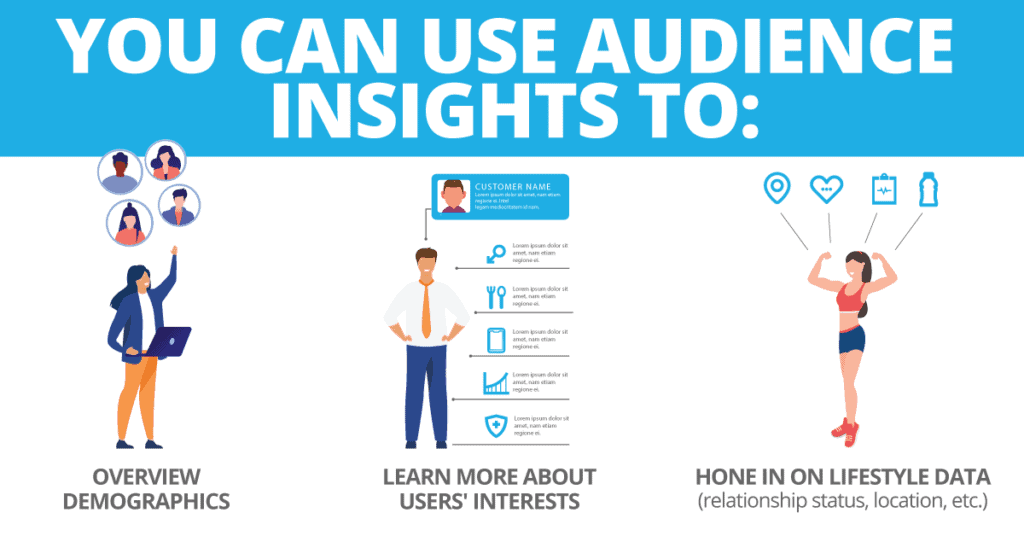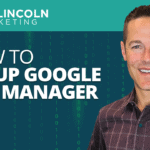
Top 16 Questions to Ask a PPC Company in 2024
In 2024, choosing the right PPC company is not just about spending your advertising budget. You want to make every cent count towards your business
Gone are the days where television ads and billboards were the most effective means of promoting your brand. Now, it’s all about appealing to your online audience.
This shift to digital has certainly leveled the playing field for marketers of all stripes. But, setting marketing actions into motion without a previously devised plan could be detrimental to your business. That’s where we come in.
In this post, we’re going to cover how to create a digital marketing strategy from scratch by breaking down the digital marketing strategy steps needed to set your business up for success in 2021 and beyond.
Currently, there are more than 4.6 billion active internet users worldwide, which is nearly 60% of the global population. In order to increase the visibility of your brand and ensure you’re targeting the right audience, you need to plan out your objectives in advance.
Unfortunately, 45% of organizations don’t have a clearly defined digital marketing strategy in place, which means the remaining 55% are essentially taking a leap in the dark with no clear path to follow to generate positive results.
In a CSO Insights study, nearly 32% of companies that had a marketing strategy achieved 27.1% higher win rates and 18.1% higher quota attainment than those without a marketing strategy.
Research also shows that teams that document their strategies are nearly 315% more likely to report success than those that don’t.
However, 39% of marketers believe their marketing strategy is ineffective. Whether you’re just getting started or have been in business for years, we want to make sure you don’t fall into this category.
A solid digital marketing strategy provides the framework your organization needs to determine how to survive in a fast-paced marketplace.
Still wondering how to start digital marketing?
Without further adieu, here’s how to create a digital marketing strategy in 8 easy steps.
If you want to set your strategy on the right course from the get-go, this acronym will help you stay on track during creative brainstorming sessions.
A SMART goal is defined as being Specific, Measurable, Achievable, Relevant, and Time-Based. Each element of this framework comes together to form a goal that is meticulously planned and trackable.
Let’s break the acronym down further:
When asking yourself how to start a digital marketing strategy, a key step involves doing some research and getting to know your audience. When you understand who your customers are, you can improve your offerings and craft better marketing campaigns.
The effectiveness of your marketing efforts will depend on the relevance of your audience segments. Be specific and look at both demographic and psychographic details like age, gender, income level, occupation, interests, behaviors, and values.
To begin defining your target audience, you should do the following:
To elaborate on that last point, channel choice is critical. Where are your customers spending their time online? Once you find that out, make sure you are marketing heavily in those areas.

To better serve your customers, you need to walk a mile in their shoes and uncover their pain points. Simply put, pain points refer to specific problems your customers are facing. Ideally, you want to position your products and services as providing solutions to those problems.
Regarding how to create a digital marketing strategy, it’s a good idea to start familiarizing yourself with exactly what your customers are struggling with. Your audience will be much more receptive to your messaging as a result.
Here are a few questions you should ask yourself to get started:
Chances are there’s some overlap between your target audience and your competitors’ target audience. Performing a competitor analysis is a strategic tactic that will help you gather insights that can be used to pinpoint their strengths and weaknesses and ensure your business stands out from the crowd.
Keep in mind that you’ll only want to look at direct competitors. These are competitors who offer similar products and services at similar price points in the same geographical areas as you.

If you don’t differentiate yourself early on, you shouldn’t expect to see high profits.
That’s why it’s important to reinforce your difference from others via a value proposition. This outlines what makes your business unique. Why should they choose you over the competition? What can you offer that no one else can?
With a one-of-a-kind value proposition, you’re able to show customers why you deserve their time, loyalty, and money.
When considering how to create an online marketing strategy, the value proposition should achieve the following:
RELATED: How to Write a Compelling Value Proposition
With a variety of channels to choose from, you need to select the ones to incorporate into your strategy carefully.
It might be helpful to first look at the big picture. Gather what you have and categorize each asset in a spreadsheet according to owned, earned, and paid media.
When you know what’s being used, you can start thinking about what needs to be kept and what needs to be cut.
Remember, a multi-channel approach almost always works best. For example, SEO will help you rank in search engines, while PPC will help you generate leads and email marketing will help nurture them.
Think about how you can better utilize each channel in your strategy to help accomplish your goal.
At this point, you probably have a better handle on how to start a digital marketing strategy. The next step is setting your budget.
Deloitte’s annual CMO Survey recently reported that marketing budgets are now roughly 11.7% of total company-wide budget, which is a record high that most marketers haven’t seen over the last decade.
When setting your budget, try not to think of it as a cost, but more of an investment that will pay for itself as your business expands due to your well-rounded digital marketing projects.
Here’s a sample strategy I recommend: Allocate 70% of your marketing budget on channels that you already know are effective, and focus the remaining 20% on low-risk, new options and 10% on experimental channels. Thirty-seven percent of your budget should focus solely on SEO and SEM, with 10% targeting mobile marketing and 34% dedicated to display advertising. Use your remaining budget to target email marketing and content marketing.

If you’re still thinking about how to create a digital marketing strategy that works, you can’t be afraid to fail.
Don’t get discouraged immediately if you’re not seeing results. There’s a ton of trial and error that goes into finding the perfect approach.
Once you do have it in place, all it will take is a little maintenance.
Digital marketing is a complex landscape and it requires a roadmap. Let these digital marketing strategy steps serve as your guide to lead you in the right direction.
Remember—once you know how to create an online marketing strategy, it will be much easier to connect to your audience, drive traffic to your site, and optimize conversions, no matter how tight your budget is.
Welcome to John Lincoln’s personal website. You can learn about John Lincoln’s books, films, book him to speak and contact him. John is directly associated with many of the businesses mentioned on this website and freely discloses this information.

John Lincoln is CEO of Ignite Visibility, one of the top digital marketing agencies in the nation. Ignite Visibility is a 6x Inc. 5,000 company. Ignite Visibility offers a unique digital marketing program tied directly to ROI with a focus on using SEO, social media, paid media, CRO, email and PR to achieve results. Outside of Ignite Visibility, Lincoln is a frequent speaker and author of the books Advolution, Digital Influencer and The Forecaster Method. Lincoln is consistently named one of the top digital marketers in the industry and was the recipient of the coveted Search Engine Land “Search Marketer of The Year” award. Lincoln has taught digital marketing and Web Analytics at the University of California San Diego since 2010, has been named as one of San Diego’s most admired CEO’s and a top business leader under 40. Lincoln has also made “SEO: The Movie” and “Social Media Marketing: The Movie.” His business mission is to help others through digital marketing.
Want to get in touch with John Lincoln? Click Here To Reach Out.

In 2024, choosing the right PPC company is not just about spending your advertising budget. You want to make every cent count towards your business

Whether you’re a seasoned marketer or just starting out, conversion rate optimization (CRO) is a powerful tool that can boost your sales, leads, and overall

Feeling overwhelmed by the sea of SEO companies out there? You’re not alone! Choosing the right partner is crucial for achieving your online marketing
 Google Tag Manager Tutorial: Step-by-Step Setup
Google Tag Manager Tutorial: Step-by-Step Setup If you want to succeed in digital marketing, you’ll need to monitor how well your strategies are performing. One of